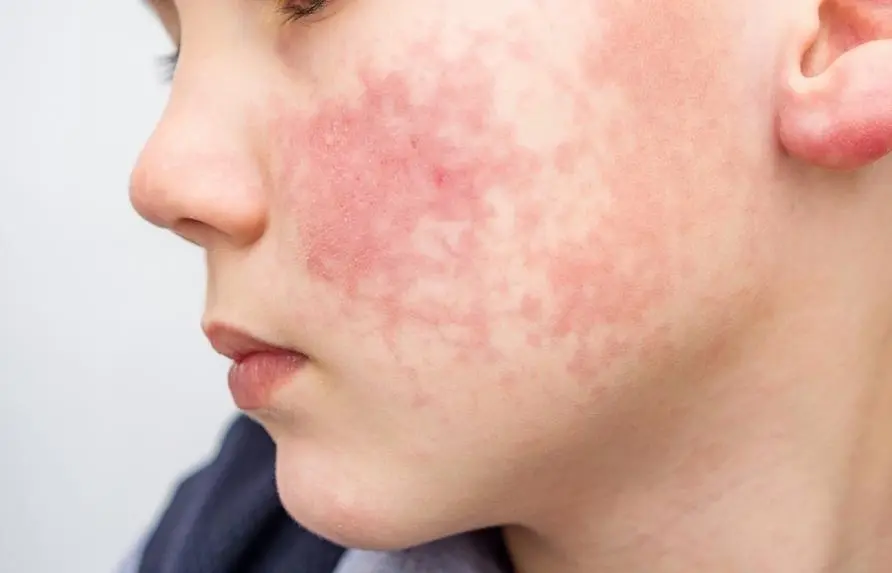Furry kids and kids no longer have to choose one over the other! Japanese study: Keeping pets can prevent "5 types of food allergies" in infants and young children

Can exposing children to pet cats and dogs during pregnancy and early infancy actually improve the child’s “anti-allergy” ability in the future? A study of 90,000 people published in “PLOS ONE” confirmed that babies who have been exposed to pet cats or dogs since childhood are less likely to develop food allergies than those who have not been exposed, including allergies to beans, eggs, wheat, nuts, dairy products, etc. , all found to have a certain degree of improvement.
Can keeping pets prevent allergies in infants and young children? A study conducted by 90,000 people per day confirms that raising cats and dogs has the greatest benefits
Fukushima Prefectural Medical University in Japan collected the health data of 97,413 mothers and their children from the “Japan Environment and Children Study” and compared specific food allergies (eggs, milk, Prevalence of allergies to wheat, legumes, fish, rice, fruits, crustaceans, buckwheat, sesame, or nuts), defined as: first, avoidance of specific foods; second, abnormal blood flow to specific foods Or skin test results, or allergic symptoms after eating the food; third, a doctor’s diagnosis of food allergy.
The research team conducted a logistic regression analysis based on pet types, pathogenic foods and pet contact time. Finally, 66,215 infants and young children were included in the study, of which 21.6% had been exposed to pets during the fetal period. Overall, the study yielded the following results:
Exposure to indoor cats and dogs during fetal development or early infancy can reduce the risk of “all food allergies” before the age of 3 years. Exposure to cats/dogs during fetal period and exposure to cats/dogs during infancy decreased by 16%/14% and 13%/13% respectively.
Exposure to indoor cats and dogs during fetal development or early infancy can reduce the risk of “egg allergy” before the age of 3. Exposure to cats/dogs during fetal period and exposure to cats/dogs in infancy decreased by 17%/16% and 18%/16% respectively.
Exposure to indoor cats and dogs during fetal development or early infancy can reduce the risk of “milk allergy” before the age of 3. Exposure to cats/dogs during fetal period and exposure to dogs during infancy decreased by 17/18% and 16% respectively.
Exposure to indoor cats during fetal development or early infancy can reduce the risk of “wheat allergy” before the age of 3 years. Exposure to cats during fetal/infancy decreased by 16%/37% respectively.
Exposure to indoor cats in early childhood can reduce the risk of “soy allergy” by 57% before the age of 3.
Exposure to indoor dogs in early childhood can reduce the risk of “nut allergy” by 28% before the age of 3; however, exposure to hamsters during fetal period will increase the allergy rate by 1.93 times.
In addition, fish, fruit, crustacean and buckwheat allergies were not significantly different from exposure to any pet species, the team said. The number of cases with rice and sesame allergy was too small to allow adequate adjustment for covariates. The study also found no significant difference between exposure to pet turtles or birds before age 3 and the incidence of any specific food allergy.
Why keeping pets can prevent allergies in infants and young children? Experts believe that 3 major mechanisms are potential causes
Study author Hisao Okabe, a pediatrician at Fukushima Prefectural Medical University, said that although the academic community has not yet elucidated the mechanism by which pet exposure affects food allergy, the following hypotheses can be drawn based on the study results:
Changes in intestinal flora. Contact with pets increases the abundance of two types of bacteria, Ruminococcus and Oscillospira, which have been found to be negatively correlated with allergic diseases such as atopic dermatitis (eczema) in children. Dr. Okabe pointed out that the two types of bacteria may also have preventive and protective mechanisms against food allergies.
Endotoxin-mediated mechanism. Endotoxins are naturally occurring compounds present in pathogens such as bacteria and are potentially toxic. Keeping pets will increase the level of endotoxins in the home. To combat this toxicity, the human body will enhance type 1 immunity (anaphylaxis induced by immunoglobulin E) to prevent allergen sensitization.
Skin barrier mechanism. The literature points out that atopic dermatitis in children is a major risk factor for the development of food allergy because it may damage the skin barrier function and increase the susceptibility to “transcutaneous sensitization”, and exposure to pets is related to a reduced risk of atopic dermatitis. This mechanism may explain the suppressive effect of exposure to food allergy in cats and dogs in this study.
However, Dr. Okabe believes that this study still has many limitations. For example, the study did not conduct any objective assessment such as oral food challenges, blood tests, or skin tests to diagnose food allergy. Instead, it relied on medical records provided by parents to determine the diagnosis. In the future, randomized controlled trials with pet exposure allocation may be needed to confirm the research team’s conclusions and further explore the correlation between keeping pets and preventing and treating allergies.
Source:
Further reading:





